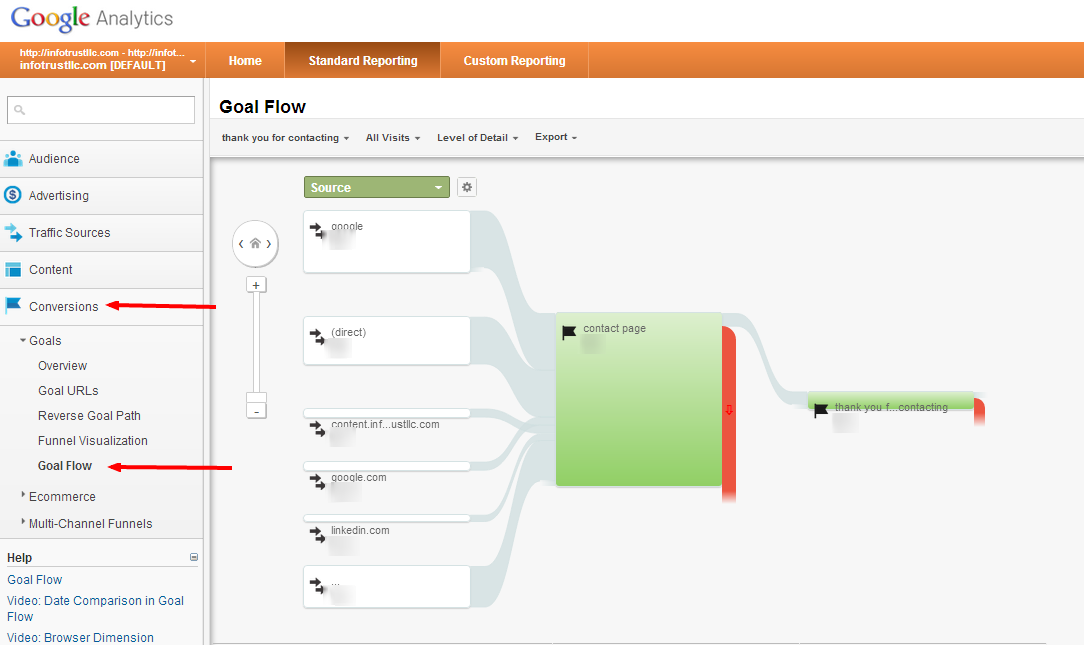Discover the Limitations of Google Analytics Goals: Introducing the Data Kind That Remain Untrackable
As organizations significantly count on data-driven decision-making, recognizing the constraints of devices like Google Analytics becomes vital. While Google Analytics Goals deal important understandings right into individual communications, there exist information kinds that elude monitoring, posing difficulties to a thorough understanding of customer habits. These untrackable data kinds raise concerns about the accuracy and completeness of the analytics data that companies heavily depend upon for their digital approaches. Curious to discover the surprise dead spots in your information analysis process?
Insufficient User Journey Tracking
Incomplete individual journey tracking within Google Analytics can impede the capability to precisely examine customer actions. When the individual trip is not totally tracked, there are gaps in the information that protect against a thorough understanding of just how users connect with a site. This lack of insight can lead to missed possibilities for optimization and improvements to the customer experience.
One usual concern with insufficient customer trip monitoring is the failure to see the full course that users take in the past completing an objective or leaving the website. Without this info, it is challenging to determine where users may be experiencing barriers or friction points that avoid them from converting. In addition, incomplete monitoring can obscure the impact of particular marketing initiatives or web site modifications on customer actions.
To resolve this restriction, it is critical to establish appropriate tracking devices within Google Analytics to record the entire individual journey. This may entail setting up occasion monitoring, goal funnels, or utilizing devices like Google Tag Manager to make certain that no crucial interactions go unrecorded. By obtaining an extensive sight of the customer journey, web site owners can make more educated choices to boost user involvement and drive conversions.
Attribution Obstacles
Navigating via acknowledgment difficulties in Google Analytics calls for a thorough understanding of how various touchpoints add to the total conversion procedure. Attribution challenges arise from the complexity of contemporary client trips, where users communicate with multiple networks before converting.
One usual attribution challenge is the trouble in connecting conversions to the right source, especially in instances where individuals interact with numerous channels prior to converting. Furthermore, cross-device monitoring positions an additional acknowledgment difficulty, as users typically switch in between tools during their journey, making it challenging to track their interactions perfectly.
Offline Conversions
Provided the difficulties linked with attributing conversions precisely in online networks, the measurement of offline conversions presents a considerable opportunity for marketers looking for a more detailed understanding of their customers' trip. Offline conversions describe actions that clients take in the real world, such as making acquisitions in brick-and-mortar stores or over the phone, participating in occasions, or engaging with printed products - what data is google analytics goals unable to track. These conversions are important for services that run both online and offline, as they provide useful understandings into the performance of advertising projects throughout various touchpoints
Tracking offline conversions traditionally positioned a substantial obstacle for online marketers, as it was testing to attach these activities back to specific on the internet communications properly. Nonetheless, with developments in innovation, such as the combination of CRM systems, special identifiers, and coupon codes, companies can currently link the space between online and offline data to get an extra holistic view of customer behavior. By properly gauging offline conversions, marketers can check here optimize their methods, designate resources more efficiently, and ultimately boost the total client experience.
Cross-Device Monitoring
Cross-device tracking plays an essential function in understanding the interconnected nature of customers' digital communications throughout several devices. In today's omnichannel globe, where users perfectly switch in between tablets, smart devices, and desktops, tracking their actions across these devices is essential for marketers to get a comprehensive sight of their customer journey.

Additionally, personal privacy problems and laws such as GDPR and CCPA have better difficult cross-device monitoring. With users demanding more control over their data and boosted constraints on monitoring technologies, online marketers have to locate ingenious and privacy-compliant ways to connect customer communications across devices.
Dynamic Web Content Involvement
Understanding customer interaction with dynamic web content is essential in enhancing digital marketing approaches for improved audience interaction. Dynamic content describes web site elements that change based on individual behavior, choices, or other aspects, using a YOURURL.com tailored experience. Tracking customer communications with dynamic web content presents challenges for conventional analytics tools like Google Analytics.
While Google Analytics can track standard interactions like clicks and page sights, it might struggle to catch even more nuanced involvements within dynamic content. what data is google analytics goals unable to track. Metrics such as time invested on specific vibrant elements, float actions, or communications within pop-ups are often not quickly measurable making use of typical tracking methods. This restriction impedes marketing professionals' ability to fully comprehend how individuals are involving with vibrant content and customize their approaches appropriately

Final Thought
Finally, Google Analytics goals have limitations in tracking incomplete user journeys, associating conversions precisely, catching offline conversions, tracking cross-device communications, and gauging vibrant web content involvement. These restrictions highlight the relevance of discovering added monitoring techniques and tools to acquire an extra comprehensive understanding of individual habits and conversions past what Google Analytics can supply.
While Google Analytics Goals deal valuable understandings right into individual interactions, there exist data types that elude tracking, posing challenges to a comprehensive understanding of user actions.Insufficient customer trip tracking within Google Analytics can prevent the ability to properly assess customer actions. When the customer journey is not fully tracked, there are voids in the information that protect against a detailed understanding of how users communicate with a website.One typical concern with insufficient user trip monitoring is the inability to see the complete path that users take before completing a goal or leaving the website. By acquiring a detailed sight of the individual journey, website proprietors can make more enlightened decisions to improve individual engagement and drive conversions.